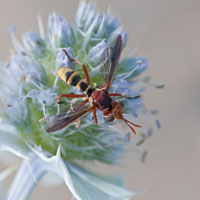
Parasitic interactions: Parasitoids
Diptera, Conopidae
Diptera, Conopidae
| Nederlands | : | Blaaskopvliegen |
| English | : | thick-headed flies |
| Deutsch | : | Blasenkopffliegen |
| Conopidae, or thick-headed flies, are flies whose larvae are parasitoids of mostly wasps and bees. Adult flies can often be observed drinking nectar on flowers. However, using flowers as a look-out, the females may also launch themselves onto suitable hosts. A structure at the belly-side of the conopid fly - the can-opener-like theca - allows the female to hold the body of the host and puncture the membrane between the tergites to deposit a single egg. The larva develops in the abdomen of the host, which dies once the conopid larva pupates. Hosts of few conopids are known, but they appear not to be very host-specific. |
| Conops flavipes |
| Nederlands | : | Zwartgele blaaskop |
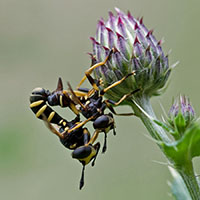 |
| The theca is clearly visible. |
| Myopa buccata |
| Nederlands | : | Bont blaaskaakje |
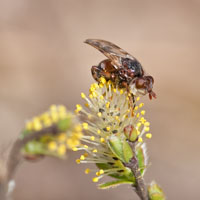 |
| Myopa cf. fasciata |
| Nederlands | : | Heideblaaskaakje |
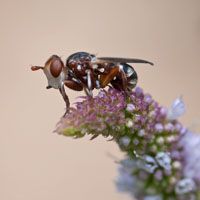 |
| Myopa species parasitize bees of the genus Andrena. |
| Physocephala nigra |
| Nederlands | : | Zwart knuppeltje |
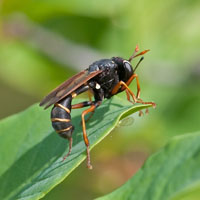 |
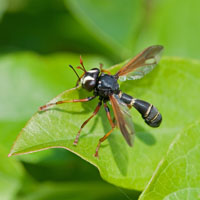 |
| Physocephala species parasitize wasps and bumble bees. | |
| Sicus ferrugineus |
| Nederlands | : | Roestbruine kromlijf |
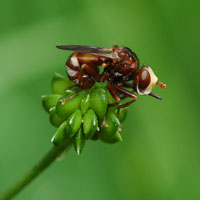 |
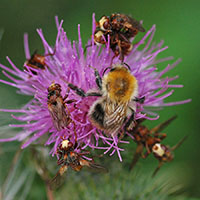 |
| Sicus ferrugineus parasitizes bees of the genus Bombus. | |
| Thecophora cf atra |
| Nederlands | : | Grijs muisje |
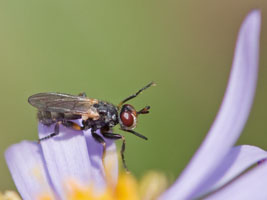 |
| Thecophora species parasitize bees of the family Halictidae. |
